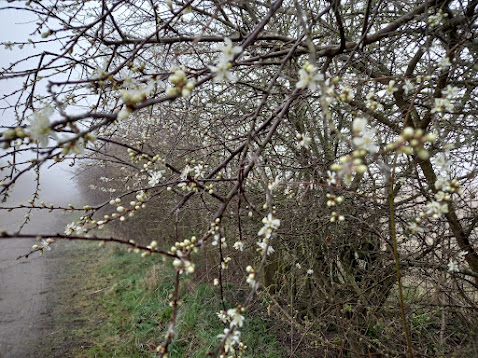It may be almost November, but it’s a classic sea-side picture: the sky is blue, the sea is bluer, the sun is shining and the sand stretches into infinity. And beyond, of course.
But this is a special beach and a special time of year: there’s much more to this picture postcard view. Wherever I look, all around me, even immediately in front of me - so close I could reach out and touch them - are seals. These are Grey Seals (we also have Common Seals in the UK) and many of them are indeed grey, though others are brown, some almost black, and some quite spotty, as if they are wearing leopard skins.
The males are massive beasts, especially when they pull themselves up and rest on their front flippers when facing off another male, or approaching females to mate. The females are smaller, though still much bigger than I imagined them from photographs and wildlife documentaries.
These female seals have come to this special beach at Donna Nook in Lincolnshire to give birth to their young - pups as they are known - and here they are too: no grey, brown or black colours yet but cute round bundles of white fur. Some still so new they are smeared with blood and mucus from the birthing process. Some are curled up asleep, next to their mothers, some are feeding on her sixty percent fat milk (no semi-skimmed here, thank you very much), and some - perhaps the more independent, or slightly older ones - have ventured away from mum a little and are pressing up against the wooden fence posts separating the birthing beach from myself and the other human viewers on the dune footpath. These babies seem as curious about us as we are about them.
One pup in particular clearly wants me to take him home. His nose is pushed through the fence, whiskers twitching, watching me with those dark pools of eyes and a quizzical expression on his face. He seems fearless as I take a couple of steps closer and crouch down to be at his level. I so want to stroke his little white furry body, but I resist, knowing that his mother might reject him if I do. There are already a few small, white, still bodies lying on the beach and I don’t want to be responsible for increasing that number. I’d heard the mortality rate is high for these gorgeous creatures, and with no tide this high up the beach to wash them away, the sad little bodies remain to be picked at by gulls and crows.
There are also many large red slabs of what look like raw meat lying on the sand. One of the volunteers from the local wildlife trust who monitor this birthing beach tells me these are the remains of the new born seal placentas and birth cords, and they too make a tasty meal for birds, and insects.
I walk on further down the dune path, to put some distance between myself and the rest of the crowd who have come to view the seals. Away from the chatter of people, and the cries of human babies, I can hear more of the seal noises. Like human babies, the pups cry to be fed, and make contented snuffling noises when they are suckling. Mothers call out to pups who have wandered too far away. The sound is haunting, and yet also strangely human-like.
I notice a large bull seal homing in on another male who is getting too close to one of his females. At around a quarter of a ton, he looks cumbersome and ungainly - as most seals do out of water - but he moves fast nonetheless. I’ve seen this behaviour earlier on today, several times, and the intruding male usually moves away after a spot of mouth-gaping and a few derisory snorts, but this one is standing his ground. They both rise up towards each other, their chests almost touching. After some posturing like this, and much more snorting and grunting, the intruding male is still not going away, so war breaks out. They lunge at each other, biting at heads and necks, drawing blood. Their roars are loud, and a couple of females have to move away from the fracas. Sometimes the pups can’t move quickly enough and are squashed or suffocated by fighting males.
I have the same mixed feelings I have watching a wildlife programme on tv: I’m curious about how the creatures I’m watching live out their lives, and I want to keep watching to learn more, but I hate seeing them fight, get injured, and sometimes die. It takes me a moment to realise this isn’t a tv programme: it’s happening right here, right now, right in front of me.
I scan the length and breadth of the beach to take in as much as possible. I can only shake my head in wonderment as I fully appreciate what is happening in front of me: the cuteness of the seal pups; the bond between mother and feeding pup; the amorous adventures of mating pairs; but also the ‘nature red’ aspect: clotted remains of birthings; gulls fighting over the body of a pup; the blood-stained face and neck of the defeated bull. It’s all part of nature’s weave I guess… the warp and weft of light and shadow, love and pain, birth and death. Sometimes, it’s a fabric I find heavy to wear; sometimes, like today, it feels light about my shoulders, and I’m thrilled to wear it.


















